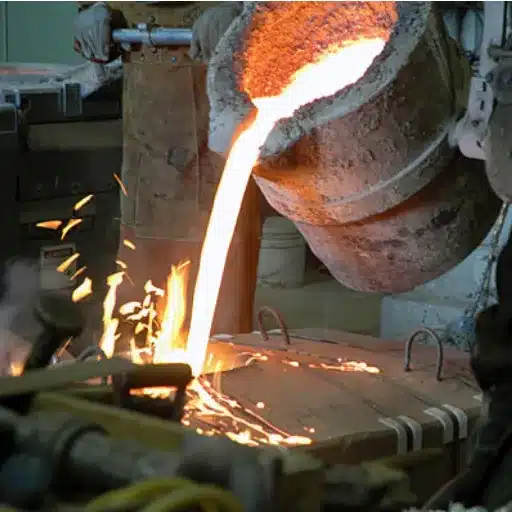From construction to medical equipment, stainless steel is widely applied as it is durable, corrosion-free, and aesthetically appealing. An important question to ask, though, is, is stainless steel magnetic? This question is more complex than most would assume because the magnetic features of steel depend on its structure and composition. Two of the most common types are 304 and 316 stainless steel. This article will elaborate on the purpose and properties of both grades and their behaviors towards magnetism. Readers shall gain an insightful understanding of how the composition of the two harmful stainless steels affects their magnetism.
What Makes Stainless Steel Magnetic?

The stainless steel magnetism is primarily due to its microstructure and composition. Stainless steels are categorized into a variety of families, like duplex, martensitic, austenitic,c and ferritic, and depending on their crystalline structure. Nonaustenitic grades, austenitic 304 and 316, are non-magnetic because of high nickel content, which stabilizes their crystal structure. On the other hand, ferritic and martensitic steels have a magnetic property because of their body-centered cubic structure, which is sensitive to magnetic fields. In stainless steels that have undergone a certain amount of mechanical deformation or certain conditions, austenitic steels become slightly magnetic due to microstructural changes.
Understanding the Magnetic Properties of Stainless Steel
I know that the understanding of its magnetic qualities is vital when picking a grade that is suitable for particular uses. When non-magnetic features are needed, austenitic stainless steels, especially 304 and 316 grades, are usually my preferred choices because of their great stability and corrosion resistance. Still, I like to advise my clients to keep in mind factors like cold working, which can increase these grades’ magnetism, although only slightly. Alternatively, ferritic or martensitic steels are great when magnetism is important because they possess a body-centered cubic crystal structure. Understanding these differences helps me satisfy numerous projects with functional and environmental material requirements.
What Types of Stainless Steel Are Magnetic?
Like most materials, the magnetism of stainless steel depends primarily on its composition and structure. I am more than glad to elaborate. Stainless steels usually fit into recognizable groups, which include ferritic, martensitic, and austenitic. Depending on the type of class, the versatile magnetic characteristics differ.
- Ferritic Stainless Steels
Ferritic is a term which denotes, inter alia, the magnetism some iron alloys develop because of the BCC crystal structure they possess, which allows the alignment of magnetic domains. 430 and 409 are popular grades that are ferritic and thus dependable for applications necessitating magnetic properties. They have relatively high iron and lower nickel or chromium relative to austenitic steels.
- Martensitic Stainless Steels
Martensitic steels are also strong and more magnetic than other types and possess BCC or body-centered tetragonal structures. Some common examples are 410 and 420 which fall in this class and are known for their magnetic phenomena with superb hardeness and toughness.
- Austenitic Stainless Steels
They are the least magnetic in the classification and range of stainless steel, and this is mainly due to the special characteristics of the face-centered cubic (FCC) structure, which does not encourage magnetism. 304 and 316 are two commonly known and used grades that, after cold working or deformation, tend to get some magnetism. This is something I always caution clients about when selecting materials.
In short, ferritic and martensitic stainless steels are liable to be magnetic because of their crystal structures. A particular austenitic grade, however, is predominantly non-magnetic but can be somewhat magnetized under certain conditions. By knowing these differences and the details of each type, I can recommend the right material for precise application while guaranteeing that the functionality and performance requirements are fully satisfied.
How Does Stainless Steel Become Magnetic?
When the crystal structure of stainless steel differs, it undergoes magnetism. For austenitic stainless steels, such transformations occur when cold working, mechanical deformation, or stressing processes are done. Welding and high temperature treatments may also cause magnetism due to changes in microstructure, which makes these changes more pronounced in certain areas. These structural changes will have to be understood while evaluating the use of stainless steel in places where there magnetic interactions may or will interfere with how the steel performs.
Differences Between 304 and 316 Stainless Steel in Terms of Magnetism
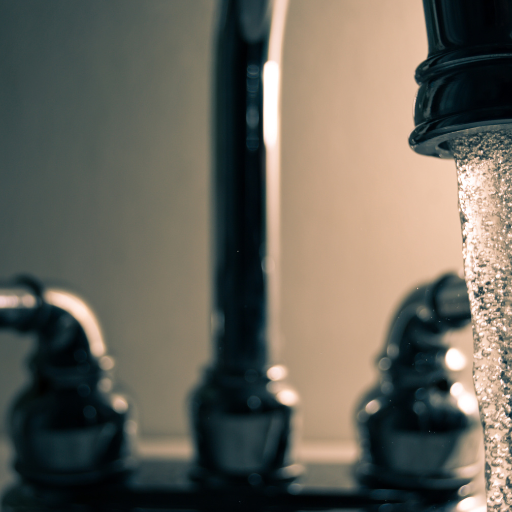
The magnetic differences between 304 and 316 are linked to their composition and their response to external factors like cold working. As an example, 304 stainless steel with less molybdenum and slightly more chromium seems to have a better magnetic response post-deformation because of martensite. However, 316 stainless steel had greater corrosion resistance due to the higher molybdenum content, which reduces the tendency to be magnetically affected under the same conditions. Because of these properties, 316 has become the popular choice in applications where low magnetic permeability is necessary, such as medical or marine settings.
Does 316 Stainless Steel Become Magnetic?
316 stainless steel, much like 304 stainless steel, is mostly non-magnetic in its annealed state; however, some magnetism may form from the transformation of austenite to martensite during intense cold working or deformation. Notwithstanding this fact, 316 stainless steel’s magnetic response is usually subdued in comparison to that of 304 stainless steel.
Comparing the Magnetic Properties of 304 and 316
In comparing the magnetic characteristics of stainless steel 304 and 316, there are some vital factors that, when analyzed, provide explanations for the differences. This is what I have noted and understood throughout the years:
- Composition Differences: One of the most important differences comes from composition. Both 304 and 316 stainless steels are austenitic, meaning they have a face-centered cubic crystal system that does not have inherent magnetism. However, 316 includes another element, molybdenum (usually 2 to 3 percent). It increases the corrosion resistance, although it does not affect the magnetic properties directly. 304 does not have molybdenum, and as such, both 304 and 316 are similar in the proportion of iron, chromium, and nickel constituents.
- Cold Working: If any one of these materials is subjected to extensive cold working, which can take the form of bending, drawing, and rolling, some austenite may begin to transform into martensite which is the magnetic phase of stainless steel. In my experience, 304 seems to develop greater amounts of martensite in cold-worked conditions compared to 316 steel. This means that after deformation, 304 is more likely to respond magnetically.
- Annealing: 316 annealed and 304 stainless steele differ from 304 in that both 304 and 316 can be annealed in order to get rid of magnetism by reversing the martensitic transformation. Both in their standard annealed states, 304 and 316 remain non-magnetic, however, they do have some trace amount of magnetism in them which varies depending on the alloy batch.
- Environment and Applications: The 304 versus 316 debate is often rooted in the concern of corrosion factors. One example is 316 having a better suitability than 304 in marine ecosystems because of the presence of molybdenum. While some may assume this is because of magnetism Within some preference of magnetism sensitive materials, this is the case, however corrosion resistance is what reigns supreme.
To sum up, both 304 and 316 stainless steel are non-magnetic in annealed state. Though, in comparison to 316, it appears that the 304 alloy is more likely to possess some magnetism after cold working. Understanding these factors may assist when selecting a material based on the intended use.
What Are the Types of Stainless Steels and Their Magnetic Responses?
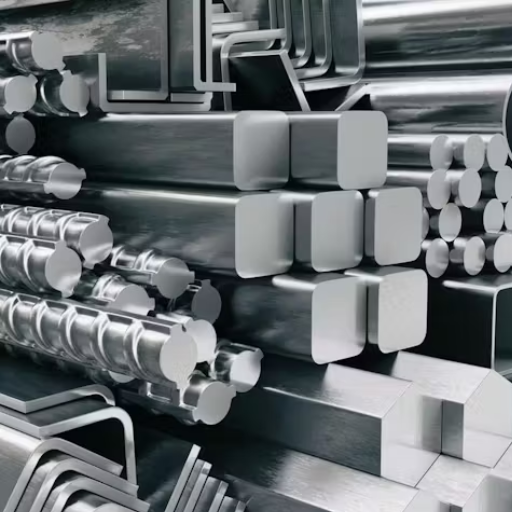
The classification of stainless steels is based on both their crystal structure and magnetic properties, which yields three primary types:
- Austenitic Stainless Steels (e.g., 304, 316): The non-magnetic characteristics of these materials in their annealed state are mostly because of their face-centered cubic (FCC) structure. They do, however, exhibit slight magnetism after cold working.
- Ferritic Stainless Steels (e.g., 430): As a result of their body-centered cubic (BCC) structure, these steels are magnetic and tend not to undergo any changes in magnetism during processing.
- Martensitic Stainless Steels (e.g., 410, 420): These magnetic steels can endure high strength and hardness for extensive applications, but, unlike their austenitic counterparts, suffer from higher rates of corrosion.
Each type’s magnetic response is closely tied to its chemical composition and microstructure, making it essential to choose the appropriate grade based on the application’s specific magnetic and performance requirements.
Austenitic vs. Ferritic Stainless Steel: Magnetic and Non-Magnetic
I’ve been studying the magnetic characteristics of stainless steel, and many people have confused the properties of austenitic and ferritic grades. The austenitic stainless steel grades, such as 304 and 31,6 are mostly non-magnetic because of having a higher percentage of NAC and chromium, as well as possessing a face-centered cubic crystal structure (FCC). Conversely, the ferritic stainless steel grades like 430 tend to be magnetic because of a lower content of nickel and a body-centered cubic (BCC) crystal structure. Even though some of the austenitic grades have better corrosion resistance and are easier to form, ferritic grades are cheaper and make for a better solution for applications that require moderate resistance to corrosion and magnetism. Ultimately, the decision on which one to use comes down to finding the right compromise between the mechanical and magnetic requirements of the environment and the application.
Understanding Martensitic Stainless Steel’s Magnetism
Due to the body-centered tetragonal (BCT) crystal structure that stems from the martensitic transformation, martensitic stainless steels are magnetic. This transformation takes place when the steel is cooled rapidly through a two-phase region from elevated temperatures and results in a ferromagnetic microstructure. Steel’s chemical composition and heat treatment further affect the magnetic behavior, which makes martensitic grades ideal for applications that require strength as well as magnetism.
Duplex Stainless Steel: What’s Its Magnetic Nature?
The magnetic characteristic associated with duplex stainless steel can be attributed to the presence of both an austenite and ferrite phase in its microstructure. My personal opinion is that the partial magnetism seen in duplex steels stems from the ferritic phase; however, the rest of the austenitic phase negates this to some degree. Therefore, it is reasonable to expect that duplex grades possess lesser magnetic characteristics when compared to fully ferritic or martensitic steels. The level of magnetism present can vary depending on the chemical composition of the steel and the amount of ferrite versus austenite that is contained. These two-phase stainless steels are strong, have good resistance to corrosion, and have moderate magnetic characteristics, which is why they tend to be preferred.
How to Test if Stainless Steel is Magnetic
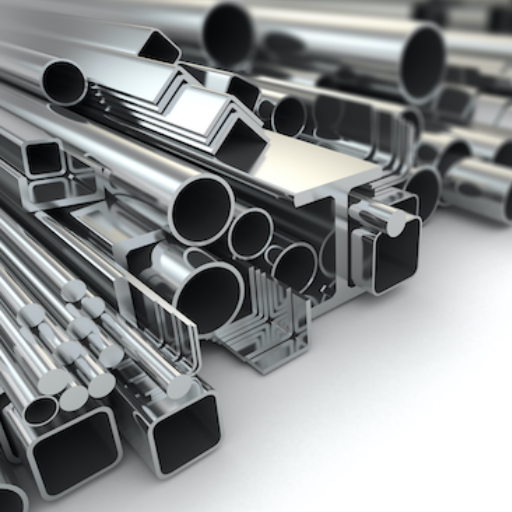
The most uncomplicated method to check whether stainless steel is magnetic or not is to simply use a magnet. Just bring the magnet close to the steel – if it sticks quite well, the stainless steel is probably ferritic or martensitic, which are grades of magnetic stainless steel. However, if the magnet seems to be attracted to it very weakly, the steel is probably austenitic or a duplex grade with weaker magnetic traits. It should be remembered that a little bit of cold working or some specific alloy compositions can change the degree of magnetism, so this test is only usable for quick assessments.
Using a Magnet to Determine Stainless Steel Types
using a magnet to check the type of stainless steel gives a simple and efficient result on the first attempt. This is the strategy I employ when a swift determination is required on the field. With just a magnet, I am able to magnetically differentiate if a steel specimen is ferritic, martensitic, or austenitic. However, it is critical to bear in mind the fact that variability due to alloy chemistry or cold working may yield different answers in regard to magnetic response, hence, I always consider this a preliminary assessment. For a more thorough and conclusive appraisal, I suggest other methods like certifying documents or chemical analysis.
What to Look For in Magnetic Response?
In assessing magnetic response, attention should be drawn to the strength and homogeneity of the pull. Strong response usually suggests ferritic or martensitic steel, whereas weak or absent response indicates austenitic steel. Remember other considerations such as cold working or variation in alloys that could affect the outcome. Keep in mind that magnetic testing should be used solely for preliminary reasons and should always be followed by other analyses for verification.
Common Misconceptions About the Magnetism of Stainless Steel
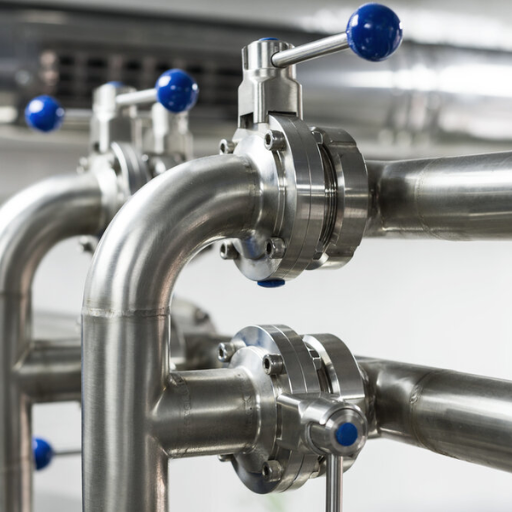
I have heard from many people the common myth that all stainless steels have no magnetism at all. The reality is, the magnetism of stainless steel is directly correlated to its microstructure. Austenitic stainless steels, such as the 300 series, are generally non-magnetic in their annealed state. Cold working, for example, can induce some magnetic response. On the other hand, ferritic and martensitic stainless steels, which are commonly present in the 400 series, have magnetic properties because of their structure. As a side note, it is good to keep in mind that magnetism by itself is not a sure way of identifying stainless steel grade or quality because alloy constituents and process history have significant effects.
Why Some Believe All Stainless Steel is Non-Magnetic
That all types of stainless steel do not have magnetism likely comes from the characteristics of austenitic stainless steel, the most commonly used type in kitchenware and medical equipment, and construction. Montgomery’s stainless steels, like the 300 series, are mostly non-magnetic due to their face-centered cubic (FCC) crystal lattice structure. However, stainless steel ferritic and martensitic types are magnetic steel grades. This misunderstanding is based on the capitalism and accessibility of austenitic grades, which permeates logic.
Explaining Weak Magnetic Responses in Certain Grades
it is apparent that, depending on certain grades, their weak magnetic response is linked to their metallurgical composition and crystal structures. For example, austenitic stainless steels, detailed in the 300 series, are virtually non-magnetic in the annealed condition because of their FCC crystal structure. However, some degree of magnetic response can result from the strain-induced martensite created from cold working. In contrast, the ferritic and martensitic grades with body-centered cubic (BCC) or martensitic crystal structures exhibit magnetism. These differences ought to be appreciated in order to make the right material choice in applications where magnetic behavior is very important.
Applications of Magnetic and Non-Magnetic Stainless Steel
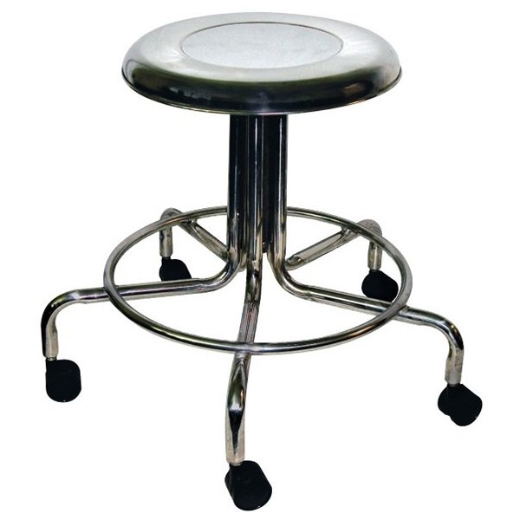
Magnetic stainless steel, such as ferritic and martensitic grades, is commonly used in applications requiring magnetic response, like electric motor components, solenoids, and sensors. Non-magnetic stainless steel, such as austenitic grades, excels in environments demanding high corrosion resistance and non-magnetic properties, making it ideal for medical equipment, food processing, and electronic shielding. Selecting the correct type ensures optimal performance based on functional and environmental requirements.
Where is Magnetic Stainless Steel Used?
Parts of electric motors, solenoids, and sensors are some of the components that require magnetically responsive materials to work with. Thus, ferritic and martensitic steels, both of which are grades of magnetic stainless steel, are the most suitable options. Unlike the previously mentioned equipment, medical devices, food processing appliances, and electronic components require nonmagnetic, but corrosion-resistant alloys, which are austenitic grade stainless steels. Choosing the right class of alloy will guarantee efficient functionality within set conditions.
Advantages of Non-Magnetic Stainless Steel in Industry
In terms of industrial applications, non-magnetic stainless steel has specific advantages. It is particularly useful in arduous environments like the chemical processing and marine industries, owing to its exceptional corrosion resistance due to its austenitic structure. Also, the non-magnetic quality of the material guarantees that there is no considerable magnetic disturbance in sensitive electronic systems, which is important for sophisticated technology. Furthermore, because it is non-expensive and durable while being easy to fabricate and maintain, non-magnetic stainless steel is reliable and versatile across many industrial sectors.
Reference
- Thyssenkrupp Materials UK: Is stainless steel magnetic?
- MicroGroup: Magnetic properties of 304 and 316 stainless steel (PDF)
- Carpenter Technology: Magnetic Properties of Stainless Steels
Frequently Asked Questions (FAQs)
Q: Is stainless steel magnetic?
A: The answer is yes, but it depends on the type of stainless steel. While most stainless steel is not magnetic, certain grades can exhibit some magnetism.
Q: What is the difference in magnetism between 304 and 316 stainless steel?
A: Both 304 and 316 stainless steel are generally considered non-magnetic, but they can become slightly magnetic after cold working. However, their magnetism in stainless steel is minimal.
Q: Why is stainless steel not magnetic?
A: Stainless steel is not magnetic primarily because it is an alloy that contains nickel, which stabilizes its austenitic structure, reducing magnetism in stainless.
Q: Are all grades of stainless steel magnetic?
A: No, not all grades of stainless steel are magnetic. For instance, the 300 series stainless steels, like 304 and 316, are typically non-magnetic, while ferritic steels can be magnetic due to their iron content.
Q: What types of stainless steel are magnetic?
A: Types of stainless steel that can be magnetic include ferritic steel and some martensitic stainless steels. These types contain higher levels of iron, which contribute to their magnetism in stainless.
Q: Can 304 or 316 stainless steel be magnetic after processing?
A: Yes, both 304 and 316 stainless steel can become partially magnetic after cold working or processing, which can induce some magnetism in stainless steel.
Q: What is the significance of a weak magnetic pull in stainless steel?
A: A weak magnetic pull in stainless steel can indicate the presence of ferrite or other magnetic properties, which can affect its applications in various industries and its compatibility with other metals.
Q: How can I test the magnetism in stainless steel?
A: You can test the magnetism in stainless steel by simply bringing a magnet close to the metal. If it sticks, the stainless steel contains iron and is likely a magnetic type.
Q: Why might I choose stainless steel 316 over 304?
A: You might choose stainless steel 316 over 304 for its superior corrosion resistance, especially in marine environments, even though both grades are generally non-magnetic.
Q: What should I consider when choosing between grades 304 and 316?
A: Consider the environment and application. If exposure to saltwater or chemicals is a factor, 316 is preferable due to its added molybdenum, which enhances its resistance to corrosion compared to 304.

